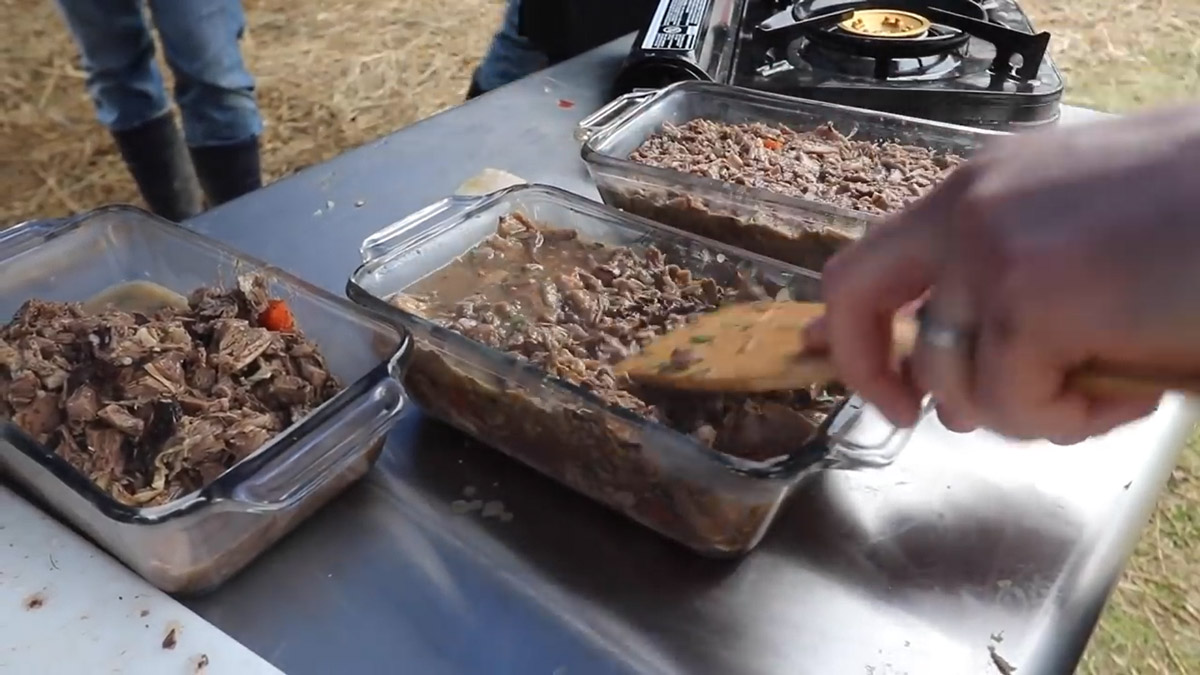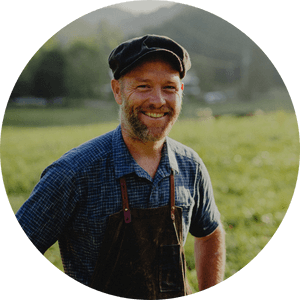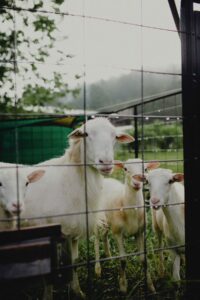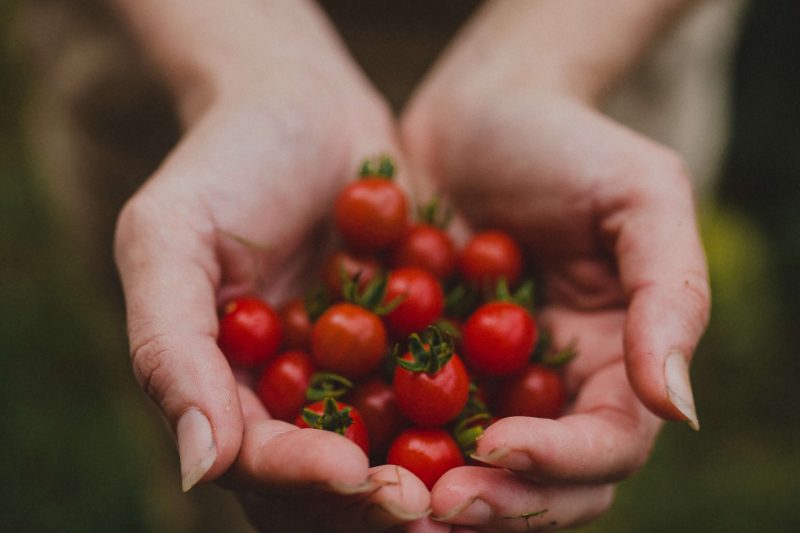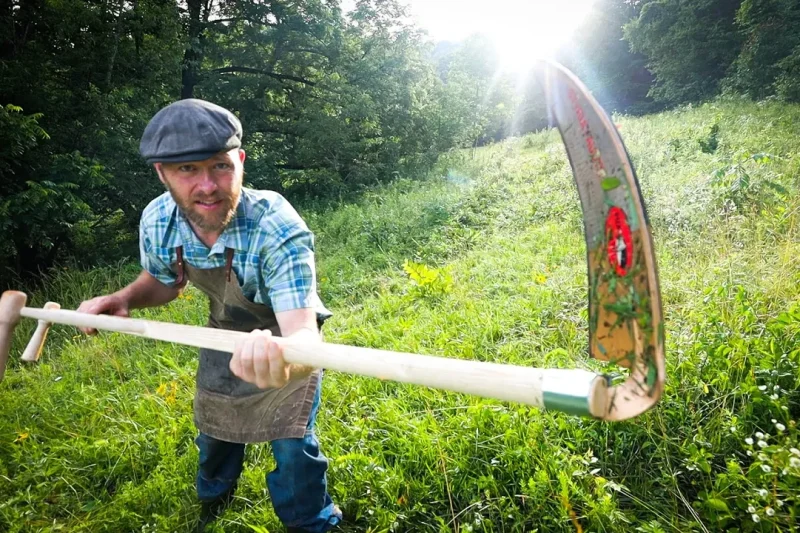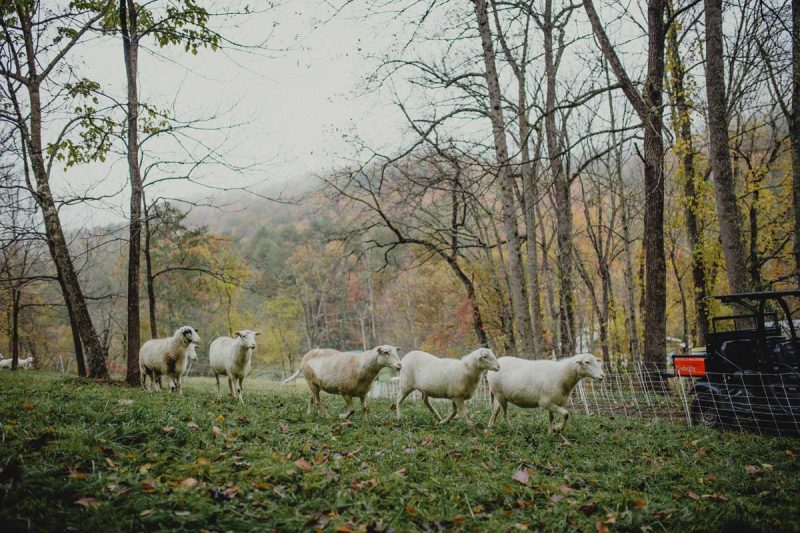It shows respect to the animal to eat everything that you can. Unlike string cheese, cheddar or other cheeses, head cheese is made from the cooked meat of pig heads, so it’s not really cheese at all.
Why We Cook and Eat the Whole Pig
Two or three generations ago, homesteaders believed in using the whole animal. Nothing went to waste.
Here on our homestead, we think it shows respect to the animal using all of it. Also, some of these different meats contain more nutrients and healthy fats than the cuts we’re used to eating.
Today we tend to focus on the ham, pork chops and bacon on the pig but leave off many tasty parts like the head meat, skin, organ meats and pig fat (rendered down as lard).
- Head Cheese (Head Meat) – Head cheese captures all the meat that would otherwise be thrown away, like the meat of the skull, cheeks, tongue and sometimes organ meat. This is then boiled down and pressed into a mold to set up as a jellied loaf.
- Pig Skin – Fried pig skin or cracklings are a great crunchy snack or salad topping.
- Organ Meats – Organ meats add nutrients to sausages and other meat recipes.
- Pork Fat – You can render excess fat into lard. Pork lard was your grandmother’s secret to making the flakiest biscuits you’ve ever eaten.
What is Head Cheese?
Head cheese is a gelatinous meat mixture often used as a cold cut that contains no actual cheese. Make head cheese from the boiled bits of pig meat that come from cooking the head, the feet and often other parts of the pig like the tongue and the heart.
Boiling these parts works much like making bone broth does in that it releases the collagen from the bones, giving the product a gelatinous binding.
This mixture is then either formed into the shape of a sausage or put into a mold or a loaf pan. Serve this dish chilled to prevent the melting of the gelatin binding.
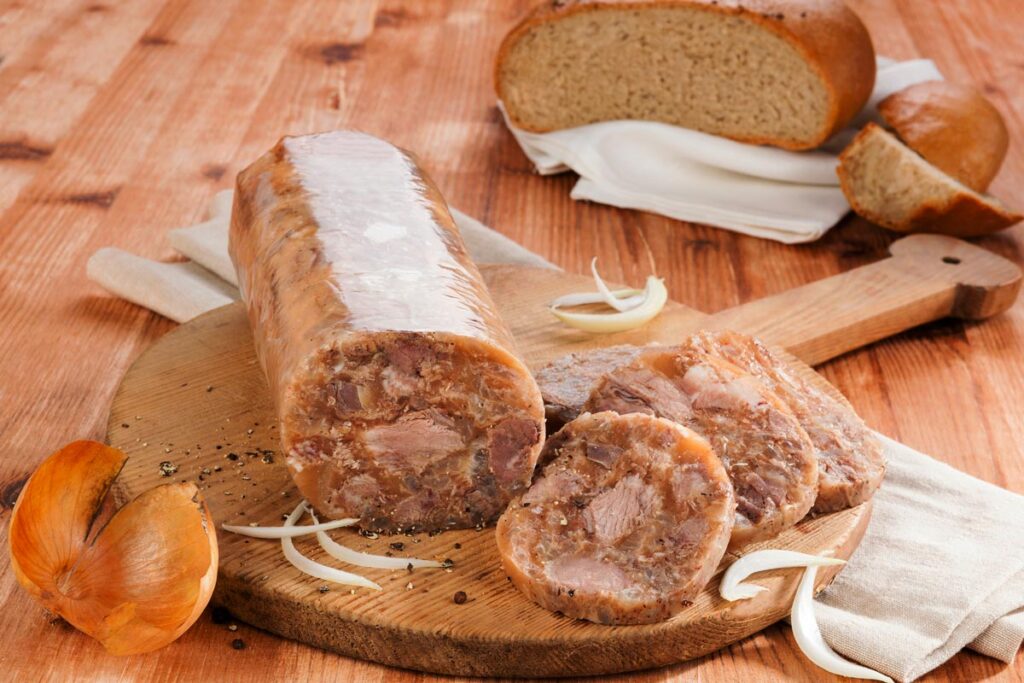
Head Cheese Around the World
Head cheese is a meat jelly from Eastern European countries. It can be very different depending on what part of the world you’re in.
- Southern Louisiana – In Southern Louisiana and other parts of the United States, hog head cheese is a specialty cold cut found in every corner butcher shop, called souse. It’s made from the boiled scraps of a pig’s head and sometimes the feet. Souse is great spread on crackers or used for filling in a po’ boy sandwich with some creole mustard. Often people eat it cubed and served over grits. It’s eaten with vinegar and hot sauce.
- Germany – In Germany, head cheese is called presskopf, and it often includes vinegar and pickles. Germany’s head cheese also usually contains beef tongue for added flavor.
- Denmark – In Denmark, head cheese is called sylte and flavored with thyme, bay leaves and allspice. Served with mustard and a side of pickled beets.
- England – In England, head cheese is called brawn. It often includes the meat from the pig’s feet, tongue and heart.
- Scotland – In Scotland, head cheese goes by the name potted heid. Make potted heid from a pig stomach stuffed with the meat of the pig’s head and feet. It’s seasoned with black pepper, paprika, and garlic and is usually smoked. It’s sliced and served on bread with sliced onion and vinegar.

Does Head Cheese Taste Good?
Head cheese is an extremely rich and tender dish. Often it’s compared to sweetbreads and pate’. Serve head cheese on a charcuterie tray with cheese, crackers, and other meats. It’s also popular sliced and served on bread with mustard.
Supplies Needed
- Scraper – If your pig head still has hair, it will be essential that you take the time to clean it.
- Large Stock Pot – Use a pot large enough to hold the whole pig head with a couple of inches of water covering the top.
- Colander – Use a large colander lined with cheesecloth to get a clear broth.
- Cheesecloth – Using cheesecloth will ensure that you get a clear broth.
- Mold or Loaf Pan – Head cheese can be put into a mold like that used for Jello or can be shaped into loaves to be sliced for sandwiches.
Ingredient List
Head cheese recipes vary widely by area, so find one that works best for your tastes.
- Pig Head – The head should be fresh and clean with the eyes and brain removed, and the hair scraped off.
- Vegetables – Onion, carrot and celery are popular head cheese vegetables.
- Seasonings – Thyme, bay leaves, allspice, black pepper, paprika and garlic are popular seasonings for head cheese. Use what you like!
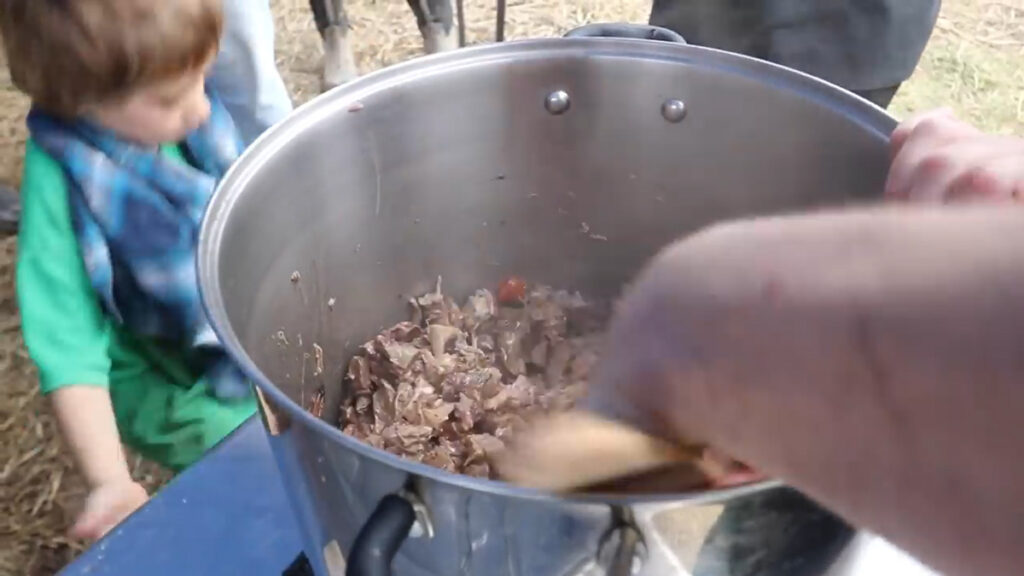
How to Make Head Cheese
To make authentic head cheese, procure a pig head. Make head cheese using pork shoulder and gelatin if a pig head is not obtainable.
- Carefully wash and scrape the head.
- The head should be split or quartered, and the eyes and brain removed.
- Boil the head for several hours until all bits of meat fall off the bones. You can include pork hocks or other meats at this time. The water should take on the consistency of honey as it boils. If it needs thickening, add a handful of gelatin.
- Remove the skull from the boiling pot and let it cool.
- Pick any remaining bits of meat off the skull and chop them.
- Use a colander and cheesecloth to strain the broth until it’s clear.
- Mix in any seasonings or vegetables you want to add.
- Form head cheese by stuffing it into a pig stomach or intestine, or use a mold and serve it as a terrine dish. Pro-Tip: Serve head cheese chilled or at room temperature to prevent the gelatin from melting.

